 Facebook
Facebook
 X
X
 Instagram
Instagram
 TikTok
TikTok
 Youtube
Youtube
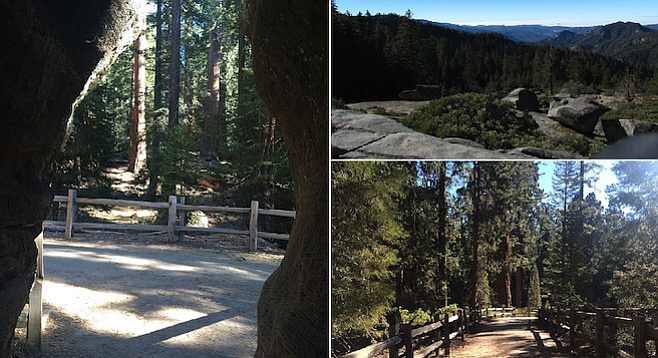
I expected it to be colder here in January. I packed snow boots, hiking boots, three jackets, and two sweatshirts for the 36-hour trip. Usually, I pack light – only a small carry-on bag for a two-week trip to Europe or Australia – but this three-day trip I had three “small” bags.
Instead of snow, we got 70-degree weather in January at 7,000 feet in Sequoia National Park and Kings Canyon.
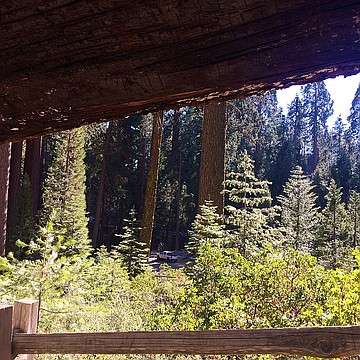
Only six hours after leaving north county San Diego we arrived at the General Sherman trailhead. This is where our "how big is big" debate began. It’s a humbling experience to stand at the base of a huge sequoia tree and look up.
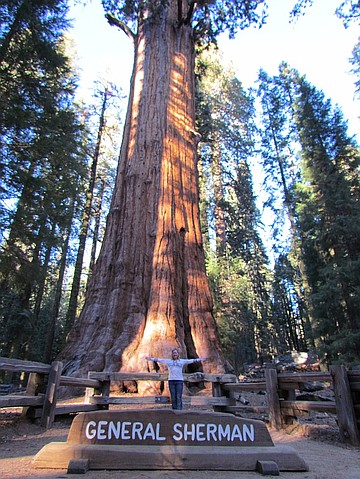
After a short, paved ½-mile hike through the forest of sequoias, I had to tilt my neck all the way back in order to get a view of the very top of the largest tree in the world: the monumental General Sherman. I thought largest trees meant tallest trees, but I was set straight by Dana Dierkes, Public Affairs Specialist at Sequoia and Kings Canyon National Park. The trunk of the General Sherman in Sequoia National Park is 35 feet wide! It’s the largest tree – by volume.
Redwoods, by contrary, are slender towering giants, with the tallest measuring nearly 380 feet tall. The Hyperon is located in a remote area of Redwood National Forest (its location is secret) and is estimated to be just 700-800 years old, compared to the General Sherman at 2,500 years old. The Hyperon trunk is only 4.5 feet wide. We settled our debate and called it a draw: both sequoias and redwoods live up to the descriptors "big" and "giant."
The air was thin and crisp going into my lungs, and I had to stop often on the trails here to catch my breath. Benefits of visiting in the winter: fewer crowds and beautiful snowcapped mountains. We saw some snow later on in the shaded areas at Kings Canyon.
The manager of the John Muir Lodge said he didn’t see one person on his seven-mile hike that morning. There was only one other couple in the restaurant for dinner, and the bears are in semi-hibernation. Still, everyone working in the forest will warn you to remove ALL food, drinks, ice chests, any scented items and trash from your car when parked.
At the Giant Forest Museum, we learned that sequoias live to be 2000+ years old because they are resilient and heal themselves from fire and pest damage. But these giants are seriously threatened by climate change. In a 2012 study conducted by the United States Geologic Survey, nearly the whole population of Sequoias could be impacted and gone in the next hundred years. They need an environment that's just right to thrive, which exists in Sequoia National Park – for now. The snowcaps provide runoff, which then provides the groundwater for the trees to drink.
Now, with a warming climate, there's less snowpack and thus less water for the trees to drink. Go see these grand, ancient living beings before they become extinct!
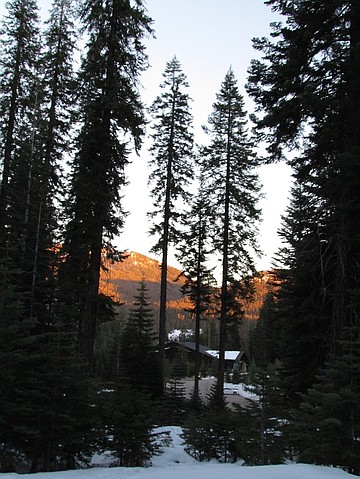
While there are many campgrounds available that are ideal in the spring/summer, we stayed at the Wuksachi Lodge this winter, a smaller, less “grand” version of Yosemite's Ahwahnee Hotel, in my opinion.
Dinner at The Peaks Restaurant was well worth the price and comes with a fantastic view of the big trees and forest surrounding the lodge. I felt comfortable in my hiking boots and skinny jeans at this fine dining restaurant. Jeff Fortin, formerly Petco Park's food and beverage manager, now the operations manager at the Wuksachi Lodge, clearly loves the area and his job.
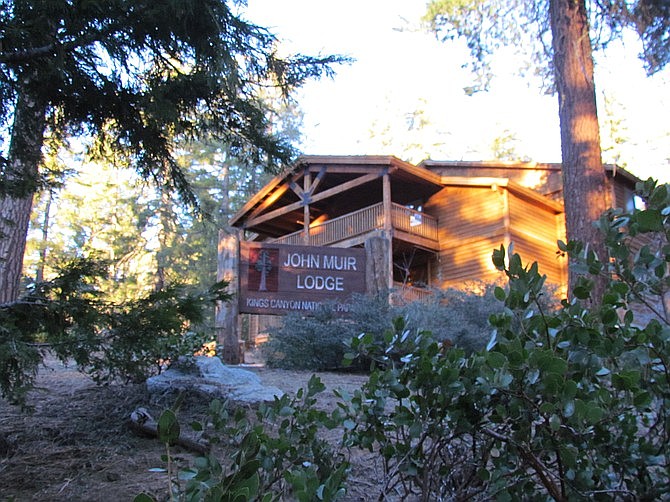
Forty-five minutes up the Generals Highway is Kings Canyon. Here we stayed in Grant Grove Village at the John Muir Lodge. On the same property are accommodations ranging from rustic canvas-topped tents to small log cabins, many recently redecorated, including one built in 1908. The restaurant's about to undergo a complete redo as well.
At Grant Grove Visitors Center, we got the latest update on hiking trails from park ranger Dominic Papia (many areas are closed during the winter season).
A little advance planning will help ensure you have the most fun and a safe visit. Visit the park website or call (559) 565-3341 for the latest travel info.
“Wear layers, good shoes, and bring water,” says Dierkes. "Be sure to get gas before entering the park as there are no gas service stations within the park." There's almost no cell service throughout the park, although Verizon phones work best in Kings Canyon.
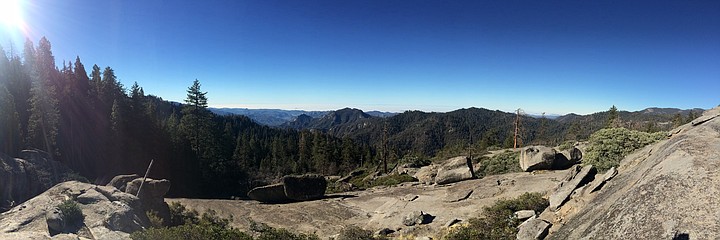
The drive from Three Rivers up to Sequoia National Park has many twists and turns, sort of like the road to Hana on Maui in Hawaii. If you're prone to car sickness, take motion sickness medicine.
In fall/winter: Hike on the trails to see the big trees, tour the museums, go on a snowshoeing scavenger hunt or stargaze (some of the best skies clear of light pollution). In September, Sequoia National Park will hosts a second annual Dark Sky Festival featuring NASA astronaut talks, telescope views of the starry skies and photography presentations.
In spring/summer: Crystal Cave is 40 minutes south of the Wuksachi Lodge and only open in the summer. Special candlelit and belly-crawling tours are favorites amongst visitors. In the summer, Papia recommends Roaring River Falls, easily accessible on a paved 1/3-mile round-trip path.
• Sequoia National Park is the second-oldest national park in the U.S., established in 1890 (Yellowstone is the oldest)
• Sequoia and Kings Canyon combined get about 1.7 million visitors a year
• Three of the top 10 oldest tree species in the world life here: giant sequoia (average lifespan: 3,266 years), western juniper (2,675 years) and foxtail pine (2,123 years)
Leave only footprints and take only pictures. Think of it like visiting someone else’s home – use the same rules of respect for visiting.


I expected it to be colder here in January. I packed snow boots, hiking boots, three jackets, and two sweatshirts for the 36-hour trip. Usually, I pack light – only a small carry-on bag for a two-week trip to Europe or Australia – but this three-day trip I had three “small” bags.
Instead of snow, we got 70-degree weather in January at 7,000 feet in Sequoia National Park and Kings Canyon.

Only six hours after leaving north county San Diego we arrived at the General Sherman trailhead. This is where our "how big is big" debate began. It’s a humbling experience to stand at the base of a huge sequoia tree and look up.

After a short, paved ½-mile hike through the forest of sequoias, I had to tilt my neck all the way back in order to get a view of the very top of the largest tree in the world: the monumental General Sherman. I thought largest trees meant tallest trees, but I was set straight by Dana Dierkes, Public Affairs Specialist at Sequoia and Kings Canyon National Park. The trunk of the General Sherman in Sequoia National Park is 35 feet wide! It’s the largest tree – by volume.
Redwoods, by contrary, are slender towering giants, with the tallest measuring nearly 380 feet tall. The Hyperon is located in a remote area of Redwood National Forest (its location is secret) and is estimated to be just 700-800 years old, compared to the General Sherman at 2,500 years old. The Hyperon trunk is only 4.5 feet wide. We settled our debate and called it a draw: both sequoias and redwoods live up to the descriptors "big" and "giant."
The air was thin and crisp going into my lungs, and I had to stop often on the trails here to catch my breath. Benefits of visiting in the winter: fewer crowds and beautiful snowcapped mountains. We saw some snow later on in the shaded areas at Kings Canyon.
The manager of the John Muir Lodge said he didn’t see one person on his seven-mile hike that morning. There was only one other couple in the restaurant for dinner, and the bears are in semi-hibernation. Still, everyone working in the forest will warn you to remove ALL food, drinks, ice chests, any scented items and trash from your car when parked.
At the Giant Forest Museum, we learned that sequoias live to be 2000+ years old because they are resilient and heal themselves from fire and pest damage. But these giants are seriously threatened by climate change. In a 2012 study conducted by the United States Geologic Survey, nearly the whole population of Sequoias could be impacted and gone in the next hundred years. They need an environment that's just right to thrive, which exists in Sequoia National Park – for now. The snowcaps provide runoff, which then provides the groundwater for the trees to drink.
Now, with a warming climate, there's less snowpack and thus less water for the trees to drink. Go see these grand, ancient living beings before they become extinct!

While there are many campgrounds available that are ideal in the spring/summer, we stayed at the Wuksachi Lodge this winter, a smaller, less “grand” version of Yosemite's Ahwahnee Hotel, in my opinion.
Dinner at The Peaks Restaurant was well worth the price and comes with a fantastic view of the big trees and forest surrounding the lodge. I felt comfortable in my hiking boots and skinny jeans at this fine dining restaurant. Jeff Fortin, formerly Petco Park's food and beverage manager, now the operations manager at the Wuksachi Lodge, clearly loves the area and his job.

Forty-five minutes up the Generals Highway is Kings Canyon. Here we stayed in Grant Grove Village at the John Muir Lodge. On the same property are accommodations ranging from rustic canvas-topped tents to small log cabins, many recently redecorated, including one built in 1908. The restaurant's about to undergo a complete redo as well.
At Grant Grove Visitors Center, we got the latest update on hiking trails from park ranger Dominic Papia (many areas are closed during the winter season).
A little advance planning will help ensure you have the most fun and a safe visit. Visit the park website or call (559) 565-3341 for the latest travel info.
“Wear layers, good shoes, and bring water,” says Dierkes. "Be sure to get gas before entering the park as there are no gas service stations within the park." There's almost no cell service throughout the park, although Verizon phones work best in Kings Canyon.

The drive from Three Rivers up to Sequoia National Park has many twists and turns, sort of like the road to Hana on Maui in Hawaii. If you're prone to car sickness, take motion sickness medicine.
In fall/winter: Hike on the trails to see the big trees, tour the museums, go on a snowshoeing scavenger hunt or stargaze (some of the best skies clear of light pollution). In September, Sequoia National Park will hosts a second annual Dark Sky Festival featuring NASA astronaut talks, telescope views of the starry skies and photography presentations.
In spring/summer: Crystal Cave is 40 minutes south of the Wuksachi Lodge and only open in the summer. Special candlelit and belly-crawling tours are favorites amongst visitors. In the summer, Papia recommends Roaring River Falls, easily accessible on a paved 1/3-mile round-trip path.
• Sequoia National Park is the second-oldest national park in the U.S., established in 1890 (Yellowstone is the oldest)
• Sequoia and Kings Canyon combined get about 1.7 million visitors a year
• Three of the top 10 oldest tree species in the world life here: giant sequoia (average lifespan: 3,266 years), western juniper (2,675 years) and foxtail pine (2,123 years)
Leave only footprints and take only pictures. Think of it like visiting someone else’s home – use the same rules of respect for visiting.
Comments